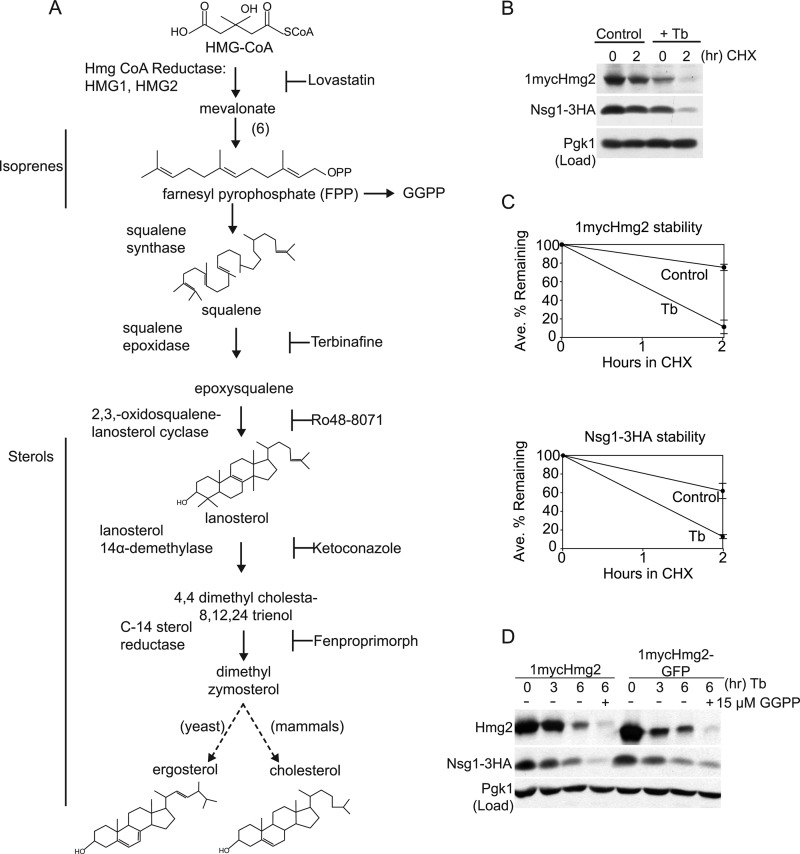FIGURE 1.
Inhibition of sterol synthesis destabilized Hmg2 and Nsg1. A, conserved superpathway of mevalonate and sterol synthesis. The early portion produces non-sterol isoprenoid molecules, including FPP. FPP is the source of the isoprene signal GGPP (also see Fig. 7) that promotes Hmg2-regulated degradation independently of Nsg proteins. Squalene production is the first committed step in the late portion of the sterol synthesis pathway. Blocking arrows beside pharmacological inhibitors indicate their target enzyme. For example, Tb is a pharmacological inhibitor of squalene epoxidase and thus blocks synthesis of all downstream sterol molecules. B, CHX protein stability assay of natively expressed 1mycHmg2 and Nsg1–3HA. Wild-type cells were grown to log phase in minimal medium and were control-treated or treated with Tb (10 μg/ml) for 2 h at 30 °C, and then 5 μg/ml CHX was added for 2 h to assay protein stability (CHX chase assay). Following SDS-PAGE, 1mycHmg2 and Nsg1–3HA were detected by anti-Myc and anti-HA immunoblotting. Protein levels were equal in all lanes, as indicated by blotting for phosphoglycerate kinase (Pgk1; load control) in the bottom panel. C, quantitation of 1mycHmg2 and Nsg1–3HA stability in two separate experiments. Average percentages remaining and S.E. (bars) were calculated from raw integrated density values obtained with ImageJ (National Institutes of Health). Unprocessed scanned images were used, and background correction was applied to each band. Corresponding results were obtained in three more experiments when the length of Tb incubation or CHX chase was varied. D, the TMD of Hmg2 is sufficient for sterol regulation. Cells expressing 1mycHmg2 (full-length as in B) or 1mycHmg2-GFP (with GFP replacing the reductase catalytic domain) were treated with 20 μg/ml Tb at 30 °C, and samples were taken at the indicated time points. After harvesting samples at t = 3 h, 15 μm GGPP was added to half of the remaining culture to further drive Hmg2 degradation. Three hours later, (t = 6 h), samples were harvested, lysed, and subjected to SDS-PAGE followed by immunoblotting. Similar experiments were performed three times.

